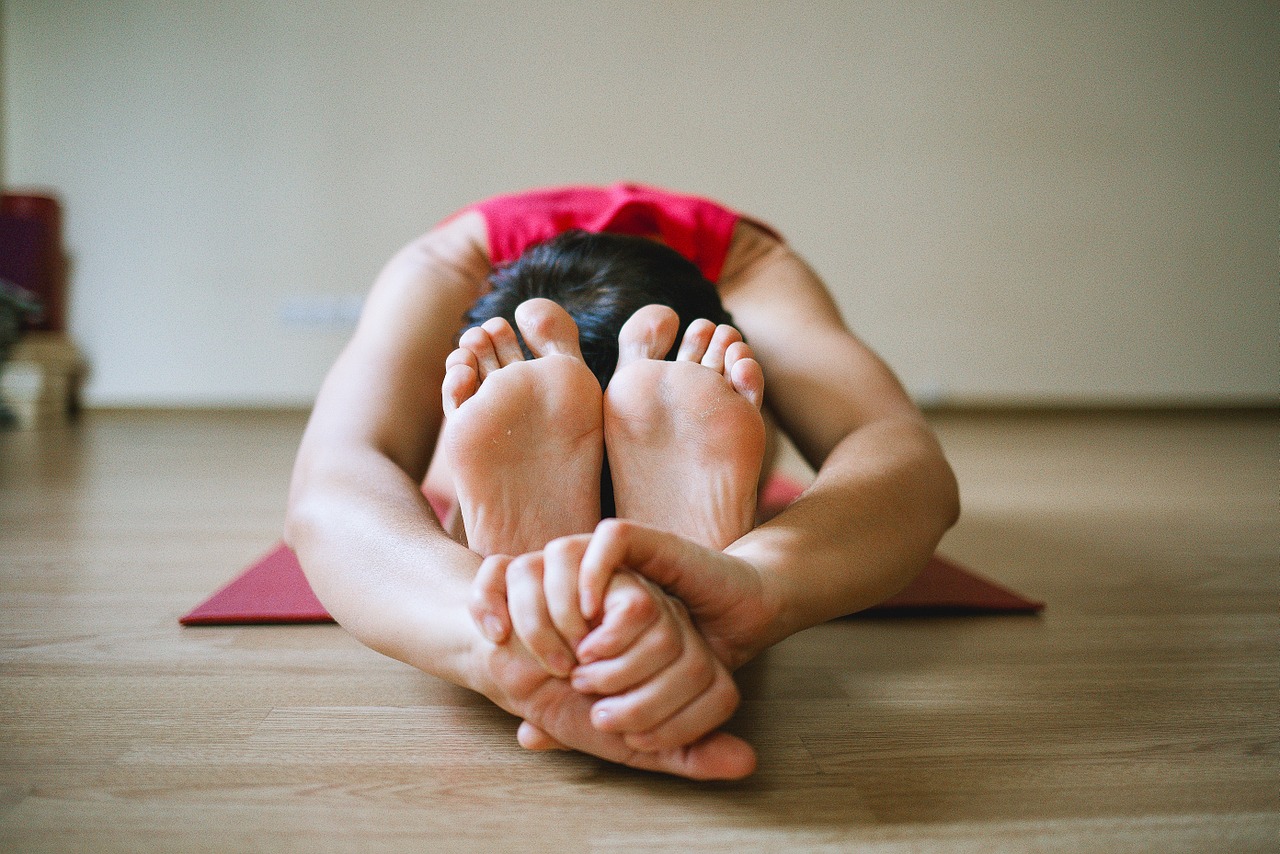Recently, and rather unexpectedly, I have become that yoga teacher.
You know, the one capable of answering all the questions about your body, how it works, and the weird sensations you experience during yoga practice.
Many of the questions are easily resolved by activating different muscle groups to support our bodies more efficiently. Others require deeper work, as they actually require more emotional support than muscular support.
I love this part of being a yoga teacher most of all, as I get to teach people how to heal their own bodies through yoga practice.
Recently, students have been coming to me with complaints of plantar fasciitis a common condition where there is pain on the bottom of the foot related to the plantar fascia being inflamed [1] The plantar fascia is a band of muscle that runs along the arch of the foot connecting the toes to the heel. When the fascia of the foot is inflamed, it causes pain and discomfort that can inhibit movement.
It is important to stretch and move this area to prevent inflammation and improve mobility. Yoga helps us do this gently and safely while improving our foot mobility, our balance and our posture. The feet, along with the legs, pelvis and tailbone are also linked to our first chakra which represents our connection to family, core values, survival, safety, security. [2]
This means that if something comes up in our lives that is related to these issues and is not resolved sufficiently, it could manifest itself in the body—perhaps as plantar fasciitis. This happens when the energy flow of the first chakra is disrupted either by physical, emotional or mental blocks.
Stretches to improve plantar fasciitis include leg and rolls from a seated position or while lying down, Hero Pose with toes tucked under, Half Heron Pose, and Camel Pose with toes tucked under.
It is also important to stretch the opposing muscles on the top of each foot by flexing and pointing. This can be done by gently bringing the foot to the hip in Low Lunge, or gently lifting the knees in Hero Pose. [3] Try to hold each stretch until breathing becomes easy again, or at least three breaths.
Another good thing to do is to practice standing balances with your hands on the wall, which gives you the opportunity to balance and focus on pressing your foot down into the floor while spreading out your toes.
Finally, it is also useful be aware of what you consume, particularly if your plantar fasciitis is a chronic problem. For instance, salty or spicy foods and alcohol can cause bloating and inflammation, often leading to discomfort in the feet and ankles. [4] Drinking plenty of water can help counteract these effects, as hydration improves muscle function and elasticity.
It is important to be mindful of our bodily sensations, our mental and emotional states, and what we consume because everything in our body is connected. The foot pain we experience may only be a symptom rather than the root cause of the problem.
Yoga practice always invites us to look deeper at a pose or situation and work diligently until we fully integrate our experiences into our minds, bodies and hearts and learn to accept ourselves—even if it is a pain in the foot.
References
[1] Retrieved from online source on September 1st, 2016. Ailments of the Heel: Plantar Fascitis. American Orthopedic Ankle and Foot Society. http://www.aofas.org/
[2] Kaminoff, L. (2007).Yoga Anatomy (2nd Ed.)Human Kinetics. Champaign, IL.
[3] Long. L. (2009). The Key Muscles of Yoga. Greenleaf Book Group. Austin, TX.
[4] Lad, V. (1998) The Complete Book of Ayurvedic Home Remedies. Castle Rock. Pittsford, NY.
[5] Judith, A. (1987). Wheels of Life: A Journey Through the Chakras. Llewelyn Books. Woodbury, MN.
—
Author: Lauren Farenga
Image: Pixabay
Editor: Callie Rushton







Read 16 comments and reply